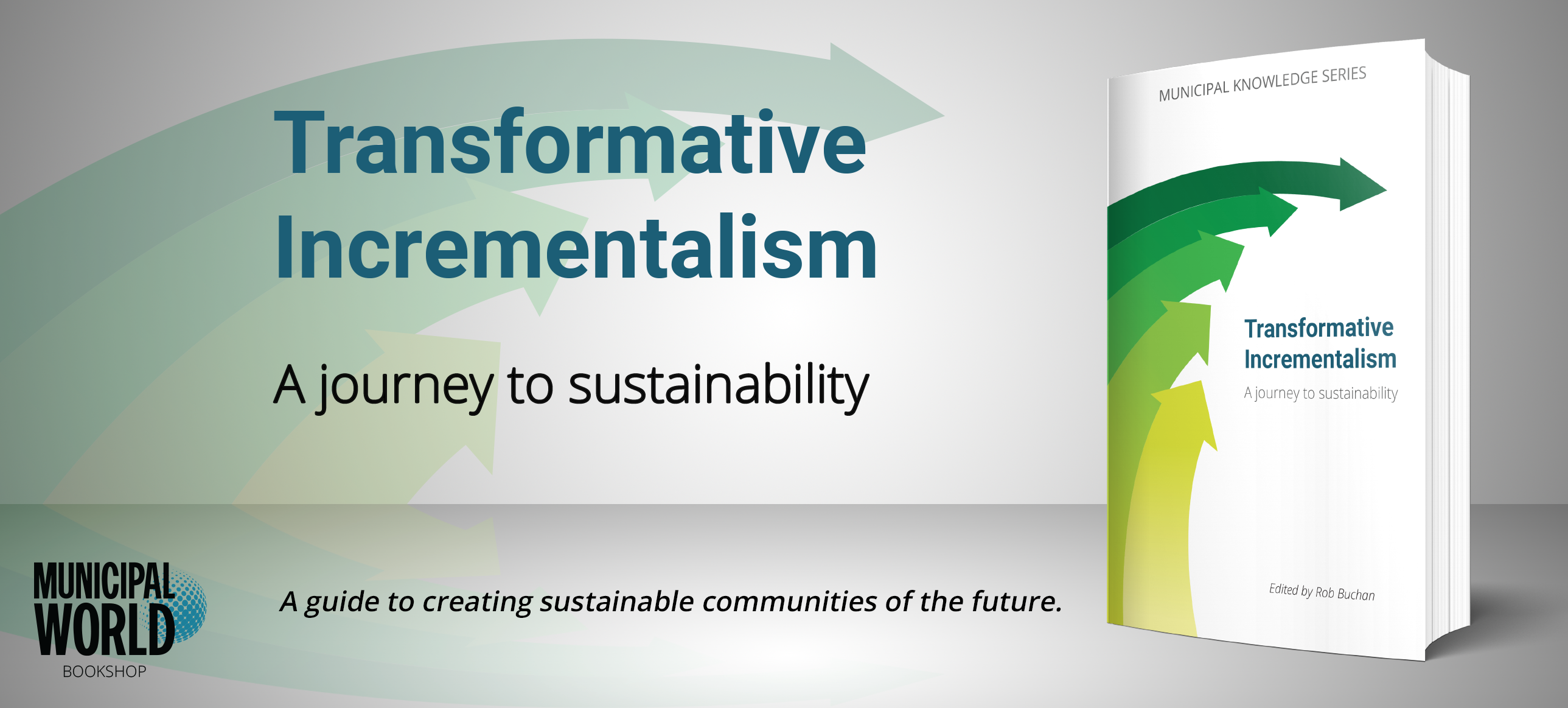Procurement evolves with changing times
 Traditional procurement process has been around since the beginning of government authority. However, these entrenched practices are starting to change. Photo: Kinetic GPO
Traditional procurement process has been around since the beginning of government authority. However, these entrenched practices are starting to change. Photo: Kinetic GPO
For provinces, municipalities, and educational institutions, the traditional procurement process has been around since the beginning of government authority. Essential supplies, services, and construction have always been needed to serve communities, businesses, and residents.
With trade agreements, policies, and jurisdictional procedures, it has developed into a very detailed practice with legal and social obligations. However, within these greatly entrenched practices, new ideas and entrepreneurial spirit are transitioning the procurement process.
Driving Efficiencies with Data and Dashboards
For public sector procurement, significant shifts are occurring as organizations innovate with new technology and perform greater analysis of gathered data to proactively increase customer service. According to Tharshini Markandaier, a leader in the fields of global supply chain management and operational excellence and recognized as one of SCMA Canada’s Women to Watch in Supply Chain, “Mere cost savings or avoidance are no longer the sole priorities; the primary emphasis now revolves around delivering value. Achieving a value proposition demands a fundamental change in perspective, which in turn, fosters increased efficiency and the adaptability necessary to meet the continuously evolving needs and expectations of internal stakeholders.”
In the private sector, online dashboards and key performance indicators have become the norm, with decisions guided by these charts and graphs. Markandaier shares her experience with the City of Richmond Hill’s move toward a similar model for their procurement division.
“Our journey commenced with a profound realization: data is the cornerstone of informed decision making,” Markandaier said. “Over the course of a year, we systematically collected data from active RFx processes, including the time spent in the department versus procurement, number of responses received, how many of those responses were compliant, and total value of the awarded contract, etc. The aim was to uncover significant trends to inform operational planning and strategic decisions across departments within the organization.”
To share this data with end-users, dashboards were created for each department with aggregated data into an overarching corporate dashboard. As the primary audience included departmental managers, directors, and executive management team, careful attention was paid to the presentation of data, employing visual aids such as pie charts, line charts, and colourful infographics to simplify and convey trends.
“Where the data indicated room for improvement, we facilitated further discussions on how to enhance results for the future,” Markandaier said. “For instance, a client group with consistently low response rates was identified. A deeper analysis of the collected data revealed a common thread – RFx documents were allowing vendors only 10 days to respond, therefore, reducing the number of proposals received. This discovery presented a clear opportunity for improvement.”
Markandaier concludes, “Our dashboards, designed with visual appeal and packed with real-time insights, serve as more than just tools. These dashboards go beyond being data presentation instruments; they promote communication and collaboration not only within our procurement department but across our entire organization. It’s a journey that not only enhances our industry but also elevates our collective professional ambitions.”
Leveraging Group Purchasing Options
The City of Lethbridge, Alta., serves a population of 106,550 according to the 2023 municipal census. The nearby Rocky Mountains contribute to the city’s warm summers, mild winters, and windy climate. The city is gathered on the lands of the Blackfoot people of the Canadian Plains and pays respect to the Blackfoot people past, present, and future while recognizing and respecting their cultural heritage, beliefs, and relationship to the land, and is also home to the Métis Nation of Alberta, Region III.
Tyler Kacsor, the city’s supply chain manager, and Clint Wall, the inventory management supervisor, serve an organization of 36 departments with just under 2,000 employees. Upon review of their current procurement processes, it was determined there were numerous decision points throughout the competitive processes, and document preparation for contracts sometimes suffered from dated materials or left gaps in the resulting supply catalog.
“Many of our problems related to capacity issues in handling the workload with our existing workforce,” Kacsor said. “In addition, the administrative costs for issuing and evaluating solicitations sometimes exceeds the actual purchase.”
To solve these types of issues, many entities turn to the use of group purchasing organizations (GPOs), with already solicited and awarded ready-to-use contracts to replace expiring contracts or help with workload issues. One of the benefits of using a cooperative contract is the significant reduction in the timeline since the solicitation process has already been conducted.
Chris Penny, CEO of Kinetic GPO, a cooperative organization, said, “With government teams trying to achieve efficiencies, this contracting tool can save on pricing and time since the contract is ready to use.”
However, for the City of Lethbridge, GPO use was limited prior to 2019. That changed when new City Manager Lloyd Brierley joined the city from a prior entity that successfully used GPOs. His arrival encouraged the team to explore the use of GPOs more strategically.
“Having introduced the use of GPOs in Toronto, I have seen the effectiveness in many different organizations and municipalities, large and small,” Brierley said. “I was confident that it would help save dollars and staff time here in Lethbridge.”
Wall further explains that when he came into the organization, his focus was inventory management.
“We decided to take the first step with a GPO contract for maintenance, repair, and operations (MRO) supplies, as it was a relatively small part of our inventory,” Wall said. “The city engaged Grainger (a leading industrial supplier) through a CANOE GPO contract for consumable parts and supplies for transit and fleet. When the contract for general supplies was due to expire, we decided to pursue the GPO route instead of going out to bid. When meeting with Grainger, it was a “no-brainer” as their contract was comprehensive, and the city could rely on their solutions and expertise. This decision freed my staff to work on other strategic initiatives.”
Taking the steps even further, the city started placing suppliers in satellite locations rather than having employees travel to central stores to obtain basic working suppliers, i.e., gloves, safety protective equipment, etc. This allows savings in both personnel time and fuel costs. Future initiatives will have contracted suppliers, such as Grainger, start to manage their section within the warehouse through a full vendor management system.
This should help to streamline inventory, reduce obsolete products, and outsource some of the important, but mundane tasks related to inventory management.
According to Marty Luciw, Grainger’s senior government sales manager, “From vending machines for general consumption to a dedicated resource to manage products and quantities, there are a variety of options for municipalities to help keep their operations running smoothly.
“For example, the vendor managed inventory implemented at some City of Lethbridge locations means the city’s employees can pick up the items they need when they need them and get back to the task at hand quickly.”
Kacsor concludes, “With better understanding of our data and spending patterns, we can continue to refine the process in an iterative manner. Many times, procuring items is the priority. However, Inventory Management and Supply Chain are also an invaluable part of the procurement process.”
End of Process Receiving Greater Attention
A very important, but sometimes overlooked, part of the procurement process is at the end when assets or equipment are no longer needed. As the expression goes, “One person’s unwanted items are someone else’s treasure,” rings true when dealing with government surplus.
While procurement is often known for prudently spending the operational budget, many are considering greater opportunities for revenue generation. In addition, support for sustainability goals can be incorporated where usable goods can be saved from landfills and incineration through repurpose and reuse.
As many organizations do not have experts to handle this duty, they often contract with companies who possess this level of expertise. A particular case arose when a small municipal airport in Alberta was renovating an older runway. During the cold planning process, the airport generated 25,000 metric tonnes of asphalt millings (ground-up asphalt pavement).
Instead of disposing of this material, the airport authorities decided to explore whether someone else might be interested in using these asphalt millings. This would serve two needs – removal of the by-product, and revenue back to the airport budget.
Using GovDeals, an online government surplus auction marketplace, they were able to advertise this opportunity using a sustainable approach that benefits both the environment and potential recipients. As part of the terms and conditions of the sale, the airport required the buying entity to remove the product within 45 days and be responsible for all removal activities. After 14 days and 115 bids, the auction closed with a final sold amount of $300,000.97.
Non-operational vehicles are also a source of potential recovered revenue. Rather than selling their automobiles to junkyards for pennies on the dollar, government agencies should consider selling them through online auctions.
Remarkably, there is a large consumer base interested in purchasing these assets for scrap metal and parts. According to a Liquidity Services survey, eight to 10 per cent of vehicles sold through GovDeals’ online auction site were reportedly destined for landfills. Another hidden potential for revenue generation is an agency’s lost and found. Unclaimed assets and confiscated goods can be a significant source of revenue for government agencies through online sales.
With changing needs and new challenges, it is imperative that procurement teams rise to the challenges of today, while striving to adopt new practices and ways of solving problems for the future.



